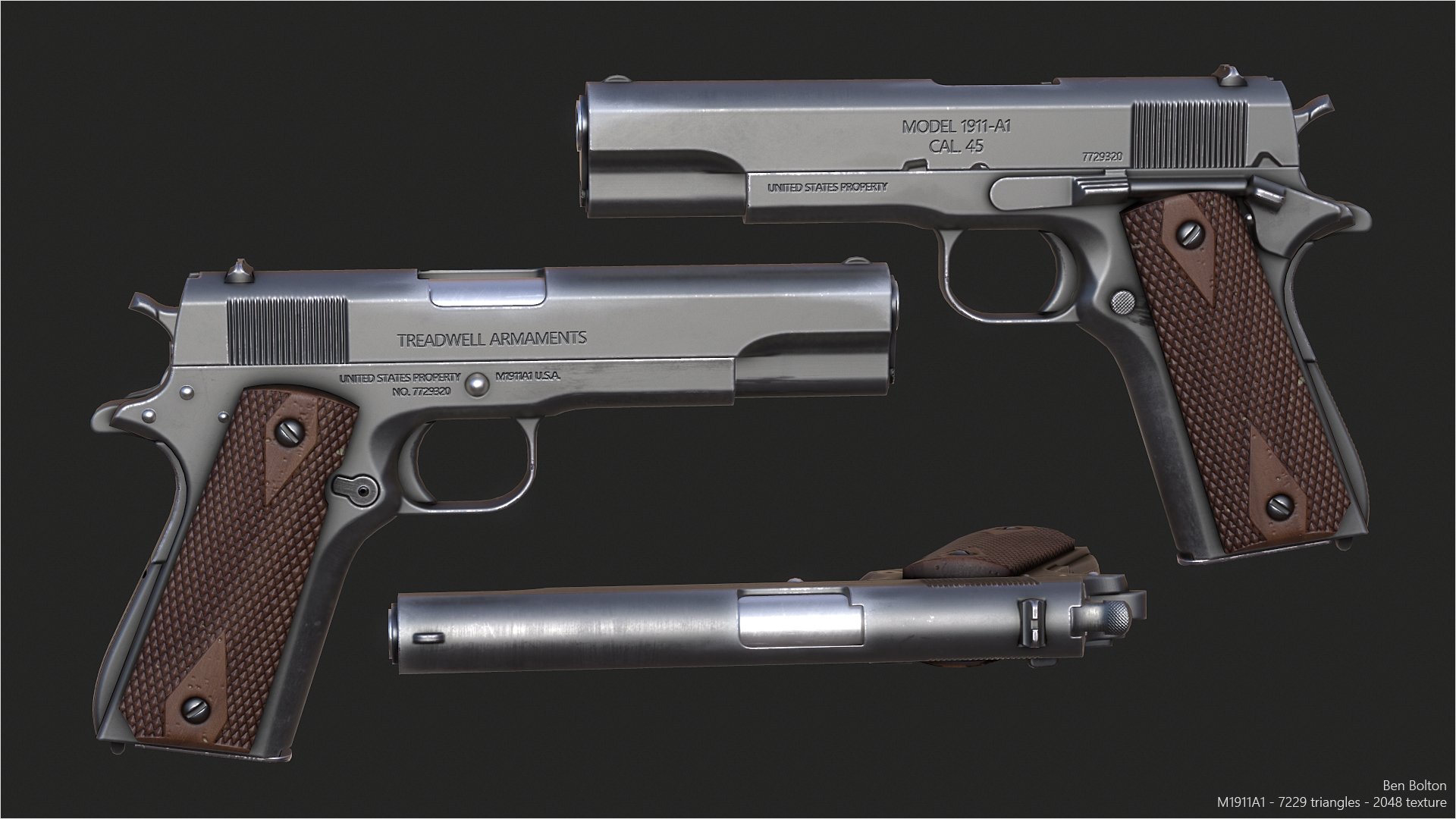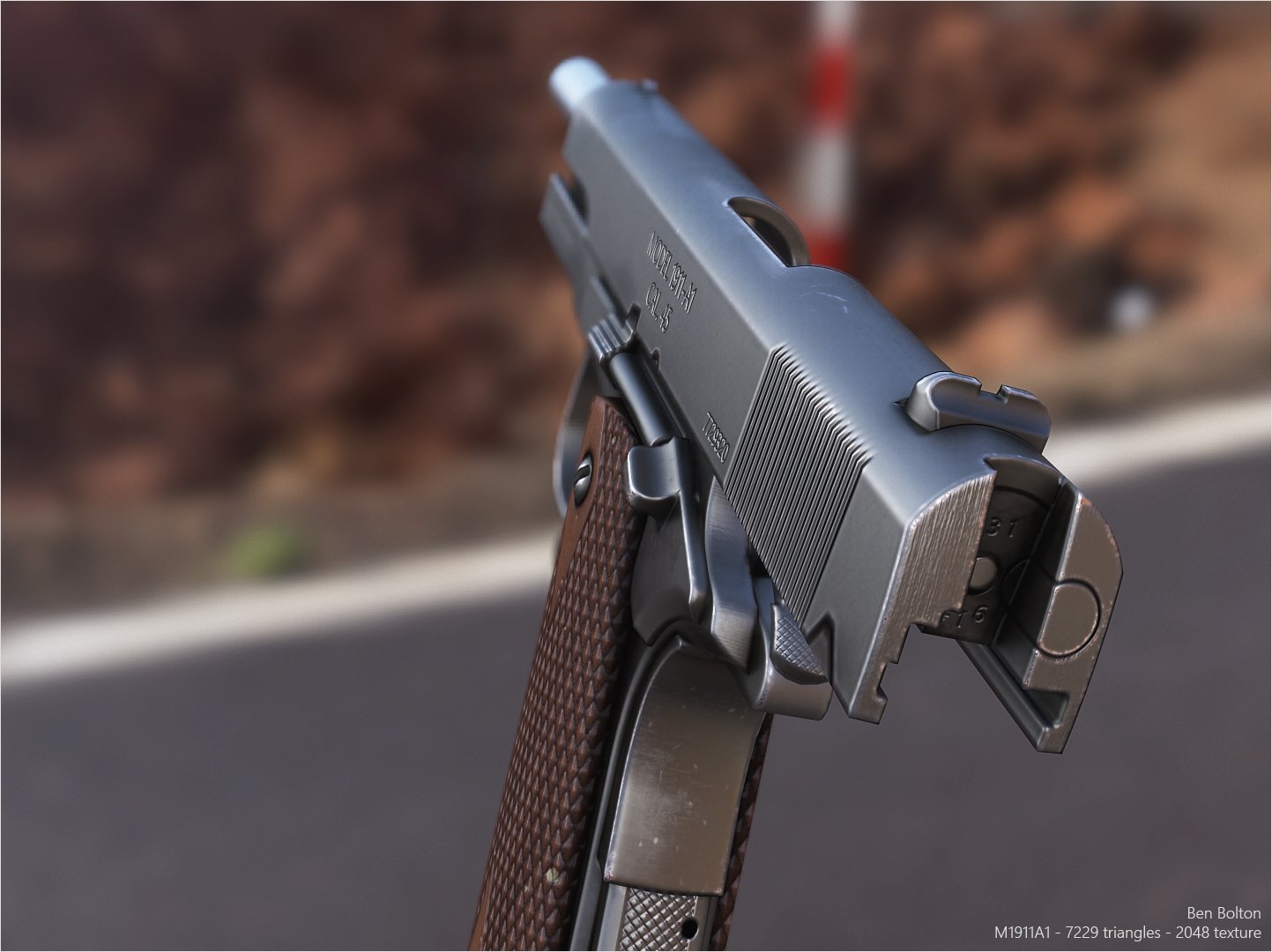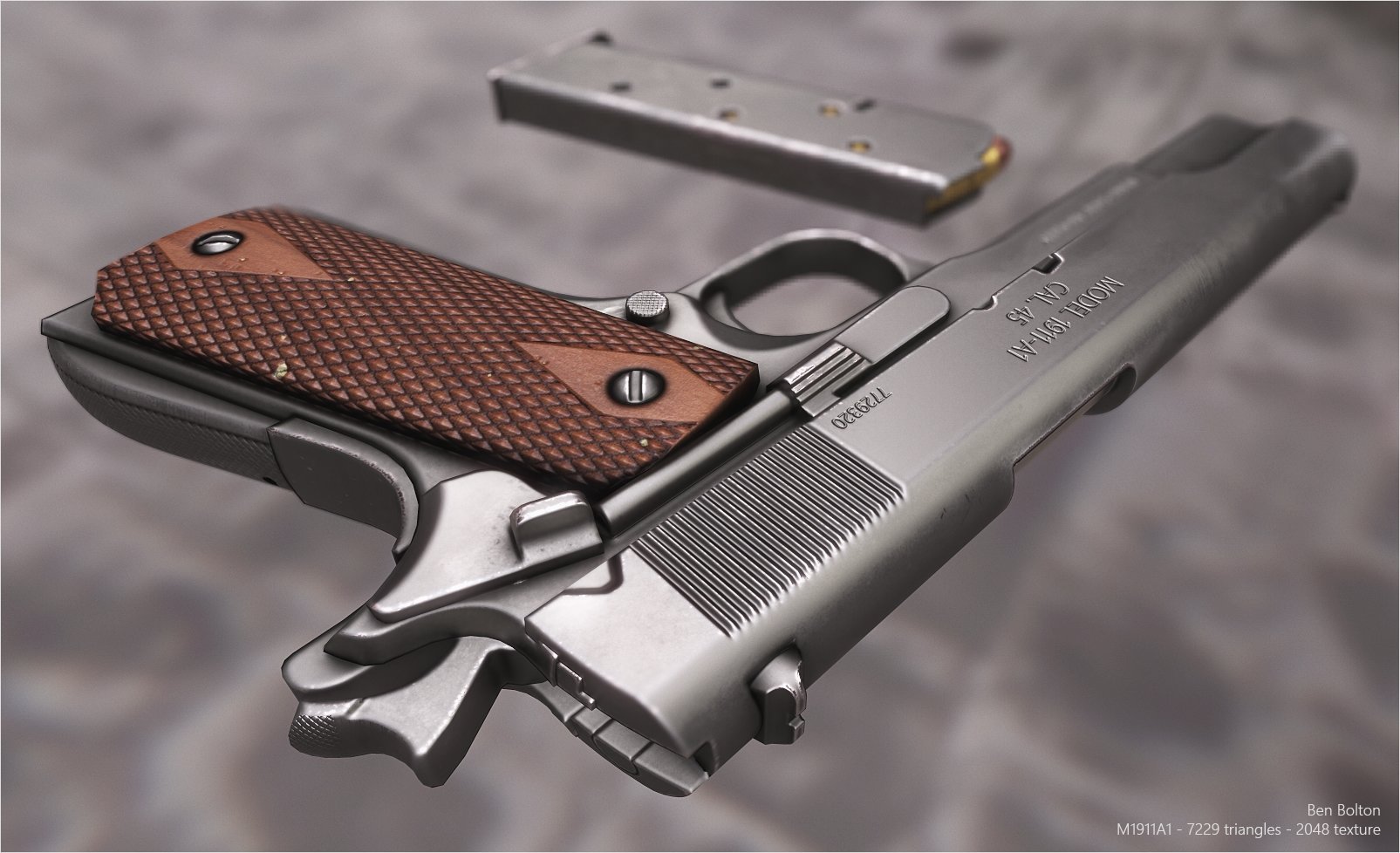The BRAWL² Tournament Challenge has been announced!
It starts May 12, and ends Oct 17. Let's see what you got!
https://polycount.com/discussion/237047/the-brawl²-tournament
It starts May 12, and ends Oct 17. Let's see what you got!
https://polycount.com/discussion/237047/the-brawl²-tournament













Replies
Were any booleans harmed in the making of this weapon?
Great result. Texture detailing of the metal is particularly good.
Yep, did this with the boolean / dynamesh method, went pretty smooth
I know it ; _ ; I'll try and do another one and record it this time. Maybe a Glock or a shotgun or something.
I'm planning to put this and the knife I did up on Gumroad at some point soon, Bergholz needs some friendly competition
I have no idea really, I was working on it for a while, but only an hour or two a day. Spent more time on the texture than usual, tried to use reference for every detail and unlearn some habits
Beautiful work
It's kind of a tough question to answer, since it's a tautology - they're flawless because they don't have mistakes. If you have errors in your bakes, the question to ask is what caused the errors. If you fix all the errors, one by one, you will end up with flawless bakes by definition.
A Practical Guide On Normal Mapping For Games
Any tips?